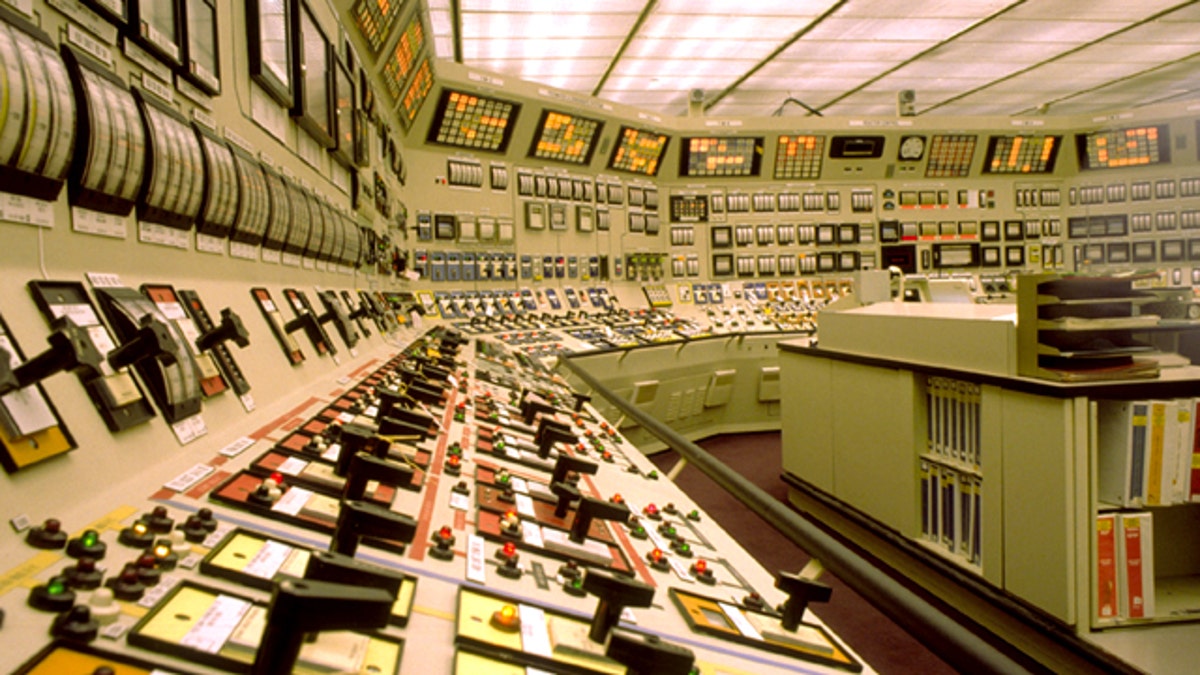
Control room at a nuclear power plant on the aging U.S. electric grid. (ORNL/Tennessee Valley Authority)
From the Keystone Pipeline to solar power to “shovel ready” projects under the American Jobs Act, both parties have come up with a variety of strategies, which they claim will solve our energy problem, enhance security, and reduce foreign dependency all while adding jobs to the economy and maintaining a little respect for Mother Nature at the same time.
Unfortunately, little has changed. Gas and energy prices are rising dramatically (expected to increase more once the heavy-travel, summer season hits) affecting the everyday costs of everyone from grandmothers making grocery runs to small business owners.
But there is one energy source, which is already known to not only be cheaper, greener, and entirely domestic, but will also add tremendous and immediate economic value to our economy while continuing to gain bipartisan support: Nuclear power.
Every month we are reminded about the fluctuating unemployment rate, hoping that some of the recent bumps will continue their positive trends. However, even if we continue the recent positive movement it will take years for unemployment to normalize and even longer to get back to full economic employment.
It will take even longer if you are Hispanic or African American, whose unemployment numbers rose again last month.
Opinion: Does Race Play a Role in the Trayvon Martin Case Even if Zimmerman is Not White?
With each new nuclear power plant 1,400 to 1,800 construction jobs are created, with up to 3,500 jobs at peak construction, in a sector that now experiences one of the highest unemployment rates in the country. Another 400-700 full-time employees will earn 36 percent more than the average salaries in the local area. For every 100 direct jobs at a nuclear facility, 66 indirect jobs will simultaneously be created to provide goods and services in the surrounding community.
With multiple applications for new reactors under review and many more needed to fulfill our energy demands, the potential for job creation is immense.
Since minorities are currently impacted the most by unemployment, it’s important to note that we also stand to gain the most. Not only will contract opportunities be set aside for minority development programs, but given recent entrepreneurial trends, Hispanics will continue starting businesses at a much higher rate than the rest of the population in order to cater to the needs of these new facilities. Consider also that higher-education, "feeder" programs for energy industry jobs are already targeting minorities, and the potential for minority involvement improves even more.
Perhaps the best part about nuclear jobs is that they can’t be out-sourced. No nuclear plant in India or China can send energy to the U.S. while displacing an American worker.
So, what’s the hold up?
Opinion: Alberto Gonzales -What is Fair for Undocumented Children?
First, we are all scared by overly sensational news stories. Did you know not a single person died, nor was there a proven case of cancer connected to the Three Mile Island accident, the "worst nuclear accident" in our history? Given the news coverage at Fukushima one would think thousands perished due to radiation leakage there as well. Again, not a single soul has passed AWAY from radiation alone.
The amount of radiation given off by a nuclear power plant would take a couple of millennia before it reached the level of your typical x-ray. Even Methuselah would have been safe planting his humble abode next to a nuclear power plant.
There are also a number of fears surrounding the impact on Mother Nature. But again, the truth doesn’t always make exciting news. Nuclear power plants produce virtually no carbon dioxide, sulfur dioxide, or nitrogen oxides - all major air pollutants, according to the EPA.
Because of their low emissions and high efficiency, nuclear energy plants have the lowest environmental impact of any electricity source (yes, even including wind, solar, water, etc.). Consider that a wind farm would require 120 square miles to produce as much electricity as the smallest capacity reactor in the U.S. A solar farm would require even more.
Opinion: Luis Gutiérrez -The Republican Immigration Fantasy
The biggest hurdle for all types of clean energy is capital. Despite all of the taxpayer-funded resources recently given to failed businesses in the renewable energy sector (see Solyndra, Evergreen Solar, SpectraWatt, etc.), existing loan guarantees for nuclear energy will only allow for two more facilities.
The Obama Administration has recently proposed tripling that number, but the Electric Power Energy Institute estimates that we will need at least 45 new plants just to comply with the Waxman-Markey energy bill’s requirement of a 42 percent cut in greenhouse emissions.
Given the amount of energy a single nuclear facility can produce, combined with the economic impact as well as the reduced dependence on unstable foreign states, nuclear energy seems to be the one viable energy solution that everyone can support as part of a diverse and comprehensive renewable energy strategy.
But don’t just rely on my word. Ask the thousands of Hispanic and African American non-profits, as well as scientists, engineers, and small business owners who have recently joined organizations such as the CASEnergy Coalition in support of nuclear energy. You can’t find more diverse support for any other existing energy solution.
Perhaps we should stop taking risks with taxpayers’ money and start betting on a sure thing that we can all rally behind.
Justin Vélez-Hagan is the National Executive Director of The National Puerto Rican Chamber of Commerce, Sr. Contributing Writer for Politic365, and member of the Clean and Safe Energy Coalition. He can be reached atJustin@Politic365.com or @JVelezHagan.
Follow us on twitter.com/foxnewslatino
Like us at facebook.com/foxnewslatino




